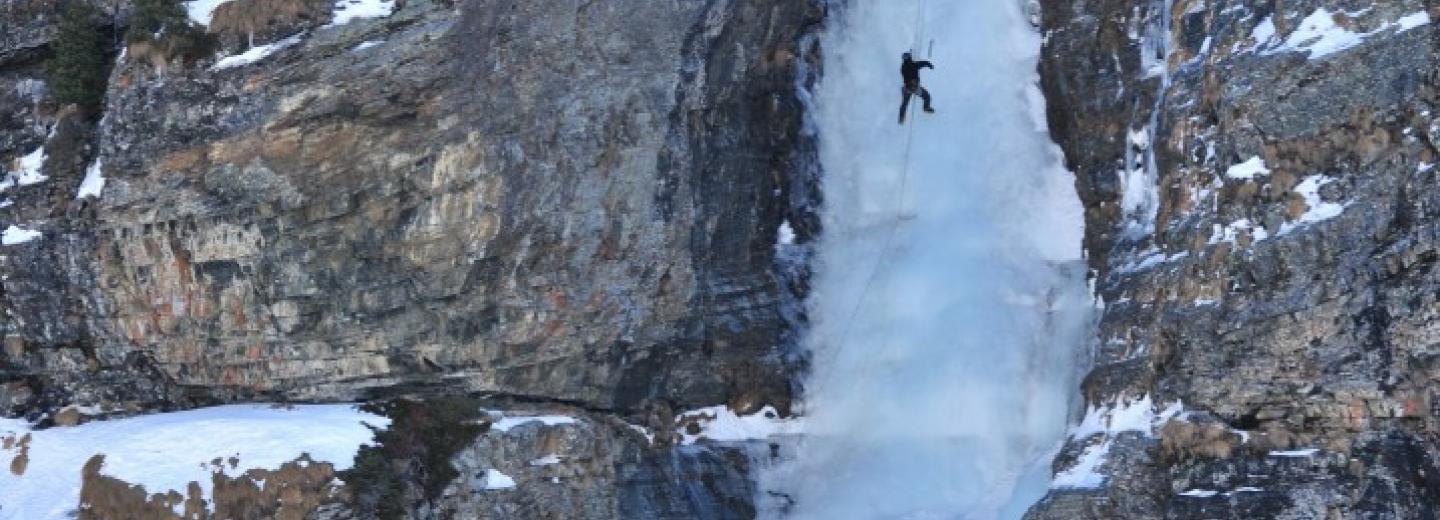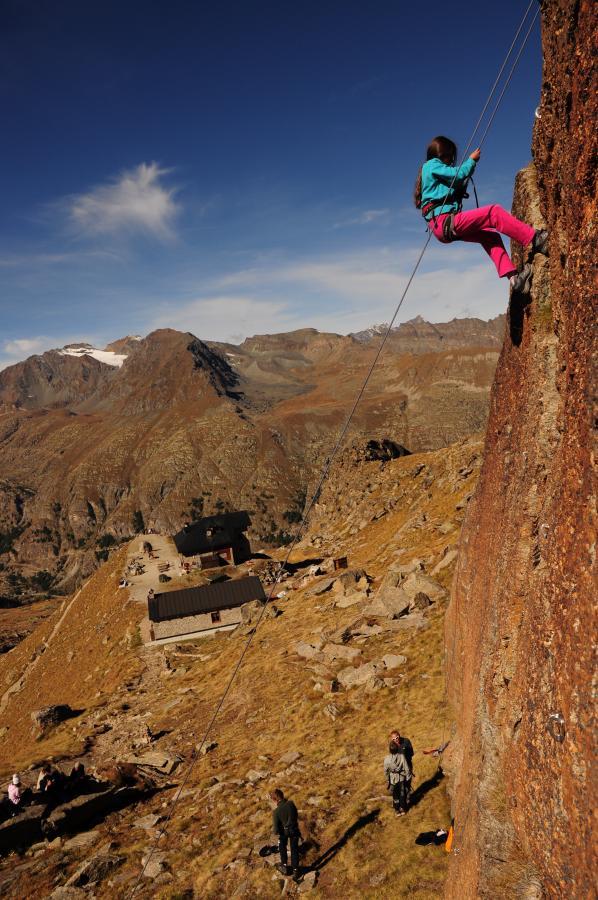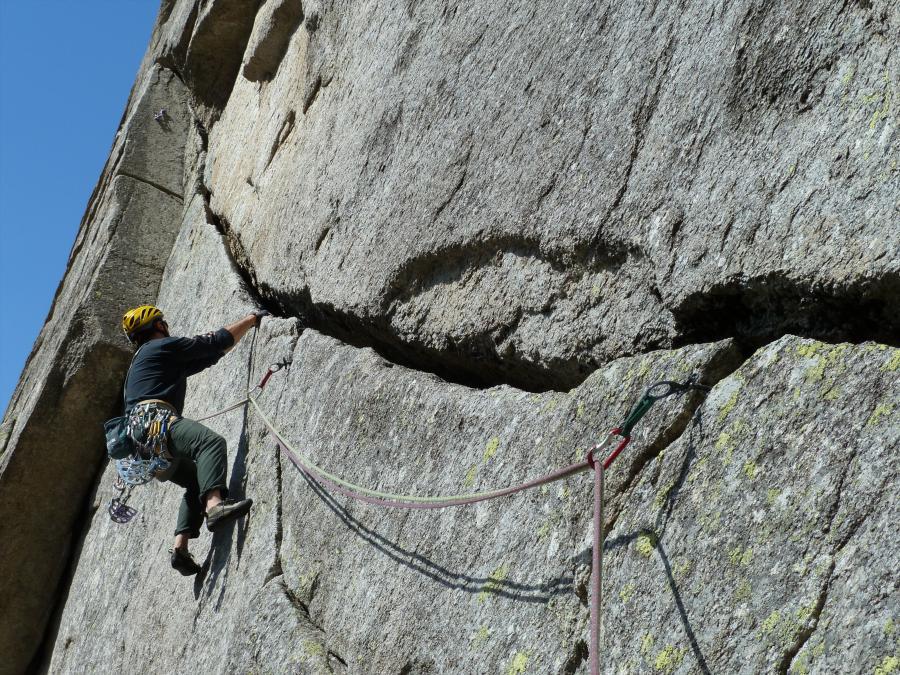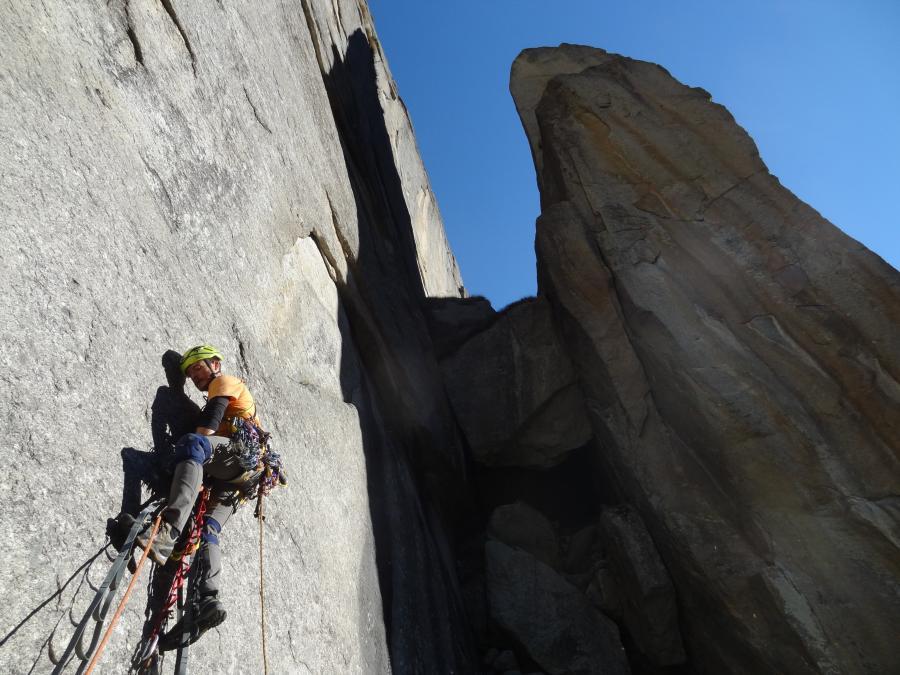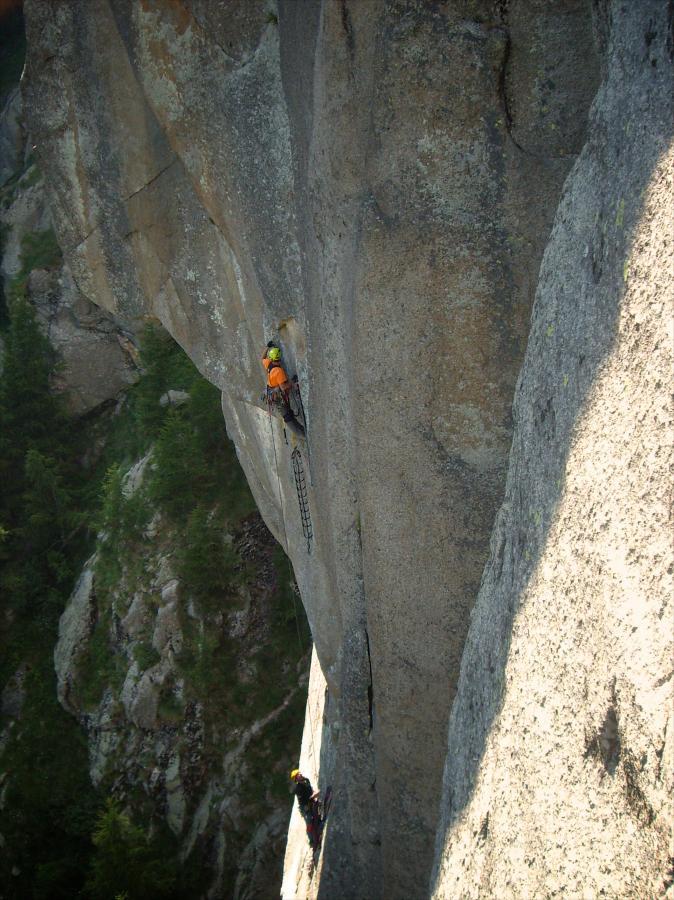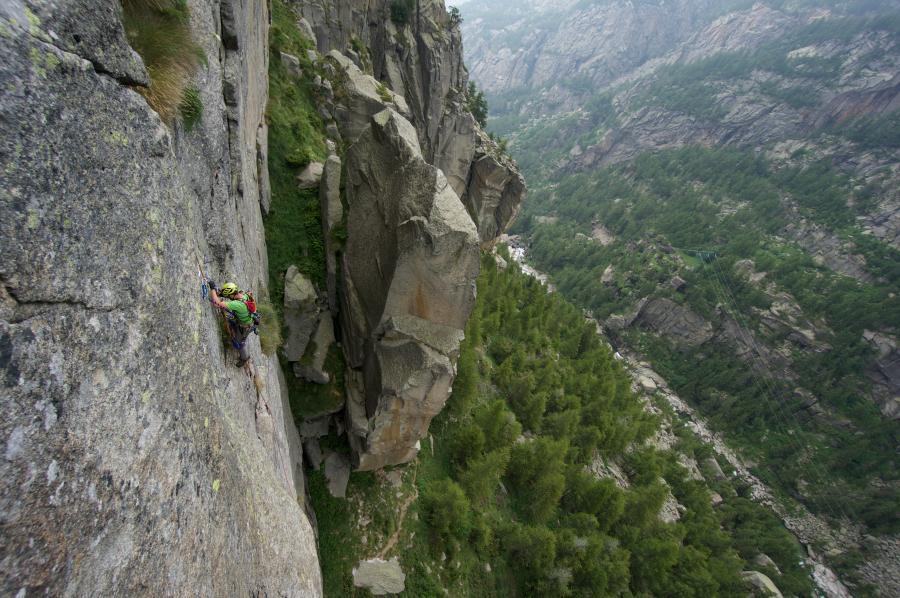Among the various ways to use the Park, also climbing, though silent and discreet, can cause damage to the delicate balance of life cycle of many species of animals and plants.
More than half of the Park's territory (53%) consists of cliffs and screes and the remaining is characterized by glaciers, forests, wetlands, shrublands, meadows and a percentage next to zero of urban areas. Every environment typology hosts characteristic fauna and flora and the presence of men can generate, even unknowingly, irretrievable damages.
The Park Regulation prohibits the collection of flowers and minerals, capture, killing and wounding of animals but also the bothering of wild fauna is considered a damaging behaviour and therefore forbidden and punishable by law.
But what does “bothering wildlife” means?
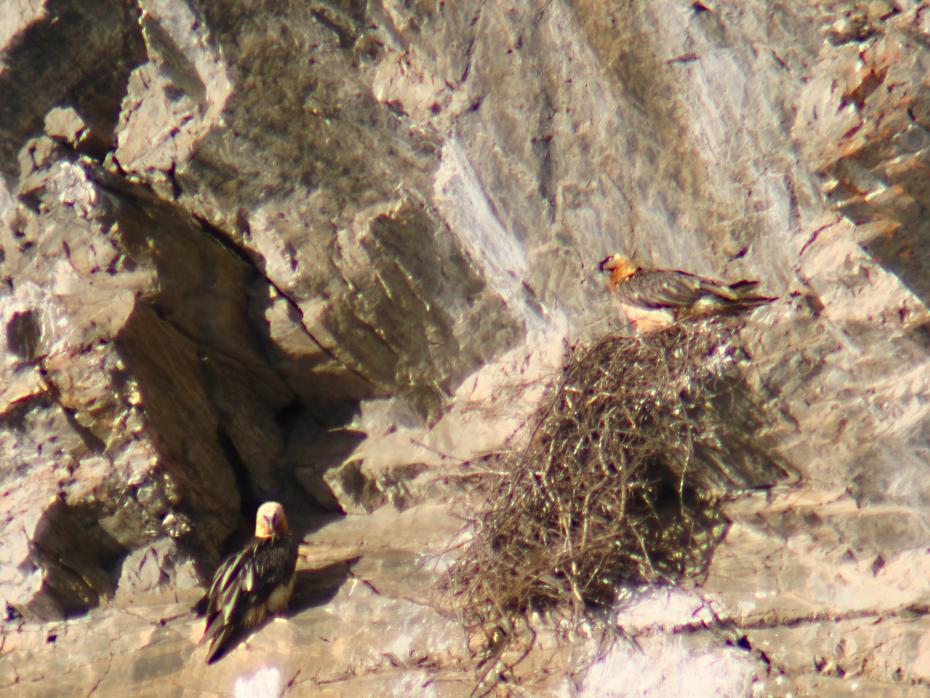
Climbing on rock allow access to cliffs and screes, often inaccessible places and, for this reason, ideal for nesting of different species of birds, mainly of pray, protected at a national and European level. Golden Eagle, bearded vulture, peregrine falcon, kestrel, owl, alpine chough, chough and many others, they are extremely sensitive to disturbance produced by human presence, particularly during the spring/summer period (June-August) and the approach to these species, their nests and their children is a source of great stress to the point of compromising the success of reproduction.
Just coming closer within a few hundred metres from the nest occupied, creates unrest in the volatile pair and the complete approach is considered a real intrusion that may cause nest abandonment, and hence the failure of reproduction. A delicate balance in which we can run across consciously for curiosity, because a good photo can impress friends, or inadvertently, because climbing a wall can unexpectedly bring us to run into a nest. So what to do?
Definitely get informations before each excursion. But the biggest problem is that, while the Eagle and the bearded vulture breeding sites are known because constantly monitored by park security, for many other species is very difficult to identify annually the exact location of the nest and then provide correct and punctual informations. The best advice is always to use common sense and, if possible, immediately move far from the nest.
In the photo above a nest with two bearded vulture and, in the one under, an ibex nearby an ice-fall
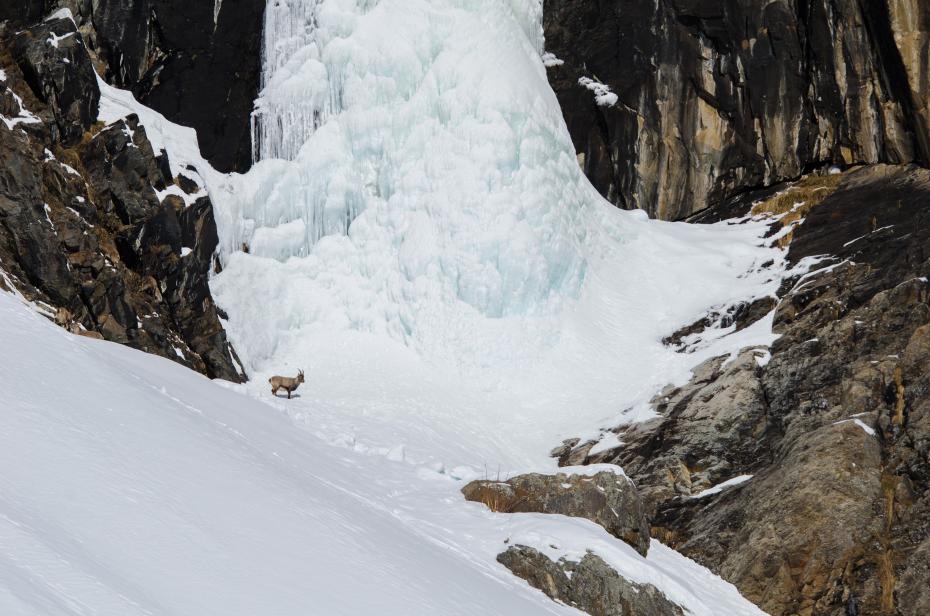
Even to the ice climbing is necessary to pay due attention. Taking place approximately from November to early March, the practice of this discipline, for timing and location, coincides with the reproductive period and with the season dedicated to the wintering of ibexes and chamois.
It is essential to avoid any form of interference in the presence of groups or individuals of these ungulates that during winter struggle to survive and deal with the delicate dynamics of coupling.
It's good to know that every wild animal, when directly bothered, is subjected to a big stress that causes a strong energy consumption, with muscular injury and, in extreme cases, the death of the exhausted animal.
Verify on the calendar what species you could run into in the 12 months of the year!
Greenery and flowers in the Park are expressed in a wide variety: deciduous and coniferous forests, heaths and shrubs, grasslands and wetlands, all with a high degree of biodiversity. The various habitats of the Park play an irreplaceable role within ecosystems and their conservation is essential for maintaining the natural balances.
Organism networks that guarantee the existence of plant and animal species, are sometimes unimaginable: so small lichens, that inhabit the rocks with a very slow growing (just few millimetres per year), guarantee the development of superior plants organisms, from pioneer species to the most demanding ones. These, from their side, attract pollinating insects, which are food for other animals and, so forth, in the ecological chain of each environment.
It is therefore easy to understand that a damage to the vegetation is not only collecting a flower but also trampling a lawn or remove moss and lichen. In this sense, in the bouldering activity, is necessary to avoid cleaning up boulders with brushes that can result in the removal of mosses and lichens, which growth happens in a very long time.
In any natural environment, and in particular in a protected area, we are guests of the nature. The paths must be carried out in accordance with rule and regulations, to avoid erosion. The principle is to avoid trampling of meadows; It is important, even during approaching to climbing sites, to pay attention while parking the car, to avoid, in order to reach the site more quickly, the vegetation trampling.
It is also worth mentioning that camping is permitted only in picnic areas, that dogs are not allowed in the Park (except for some areas and trails) and that the waste doesn't have to be left abandoned (for details see the web page: how to behave in the Park).
Read our ethical code, check any prohibitions and help us spread these good practices.
Give us string, climb in a sustainable way!
